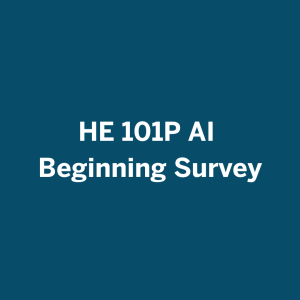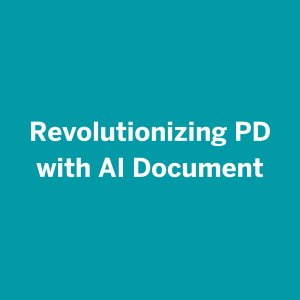6 AI-Facilitated Job Application Materials (Human Ecology)
|
|
Description of resource(s):
This resource includes lessons, discussions, and assignments that incorporate AI in career exploration and preparation. Instructors teaching professional development topics can incorporate these activities in their courses, and students can use these exercises independently to develop their professional profile.
AI-assisted lessons include:
- Exploring Potential Careers
- Assessing Fit with Potential Careers
- Targeting Specific Companies to Apply to
- Identifying Required Skills
- Preparing a Resume
- Building a Professional Summary on LinkedIn
- Preparing a Elevator Pitch
- Revising an Introductory Cover Letter
- Conducting a Mock Interview
Links to Resources:
Why I implemented this:
As an instructor dedicated to preparing students for the rapidly changing job market, my goal with this resource is to provide practical tools that foster personal and professional growth. In developing this resource, I focused on integrating AI technologies like Microsoft Co-Pilot to streamline and personalize career preparation, enabling students to create standout resumes, elevator pitches, and LinkedIn profiles tailored to their individual career goals.
My process began by identifying the core skills students need to succeed in today’s workforce. From there, I experimented with AI tools to enhance traditional methods, allowing me to offer dynamic, real-time feedback and industry insights. I wanted this resource to guide students in developing strong personal branding and encourage them to think critically about their career paths.
By documenting the students’ experiences through reflection using AI to support their career development skills, I aim to give this resource a relatable, instructor-driven tone. Ultimately, I hope it serves as a bridge between cutting-edge technology and meaningful professional growth for students.
My main takeaways:
My main takeaway was that AI tools can meaningfully support students in identifying and pursuing individualized career paths. Students showed enthusiasm for resume building and LinkedIn profile creation, and I was pleasantly surprised by the AI’s effectiveness in helping them respond to behavioral interview questions. This integration boosted their confidence, promoted self-reliance, and empowered them to refine professional materials, fostering essential skills for today’s job market with user-friendly, accessible tools.
In the end-of-year class survey, 47% of students reported that AI-generated feedback significantly improved their professional portfolios, with 30% finding it extremely useful. Additionally, 64% of students felt very confident, and 25% felt confident using AI tools after completing this course.
For detailed information, please refer to the supporting files, HE 101P AI Beginning and Exit Polls
What else should I consider?
Timing: The lessons were delivered in short, 5-10 minute sessions at the end of each class. Students were given a week to complete Co-Pilot assignments and reflect on their tool usage. This timing worked well, offering manageable chunks without overwhelming them.
Context: This approach suits courses in professional development or other classes emphasizing skill-building and self-reflection. It could also be adapted for skill-based classes where students benefit from regular, incremental practice.
Concerns with AI Privacy: For students who chose not to use their personal information with AI, alternative practice questions were available, allowing them to practice AI-based skills in a comfortable, hypothetical scenario.
Adaptations: For different levels, instructors could adjust the depth of the reflections or vary the assignments. Group reflections suit larger classes, while individual reflections fit smaller, more personalized settings.
Potential Pitfalls: Students might over-rely on Co-Piolet, neglecting personal insights. Assess through reflection assignments to balance AI-generated suggestions with critical, personal insights.
Want to Learn More?: Recommended resources include LinkedIn Learning for professional profiles (some of which are available for free here), NACE for career prep, and articles on AI’s role in career development to deepen understanding.






